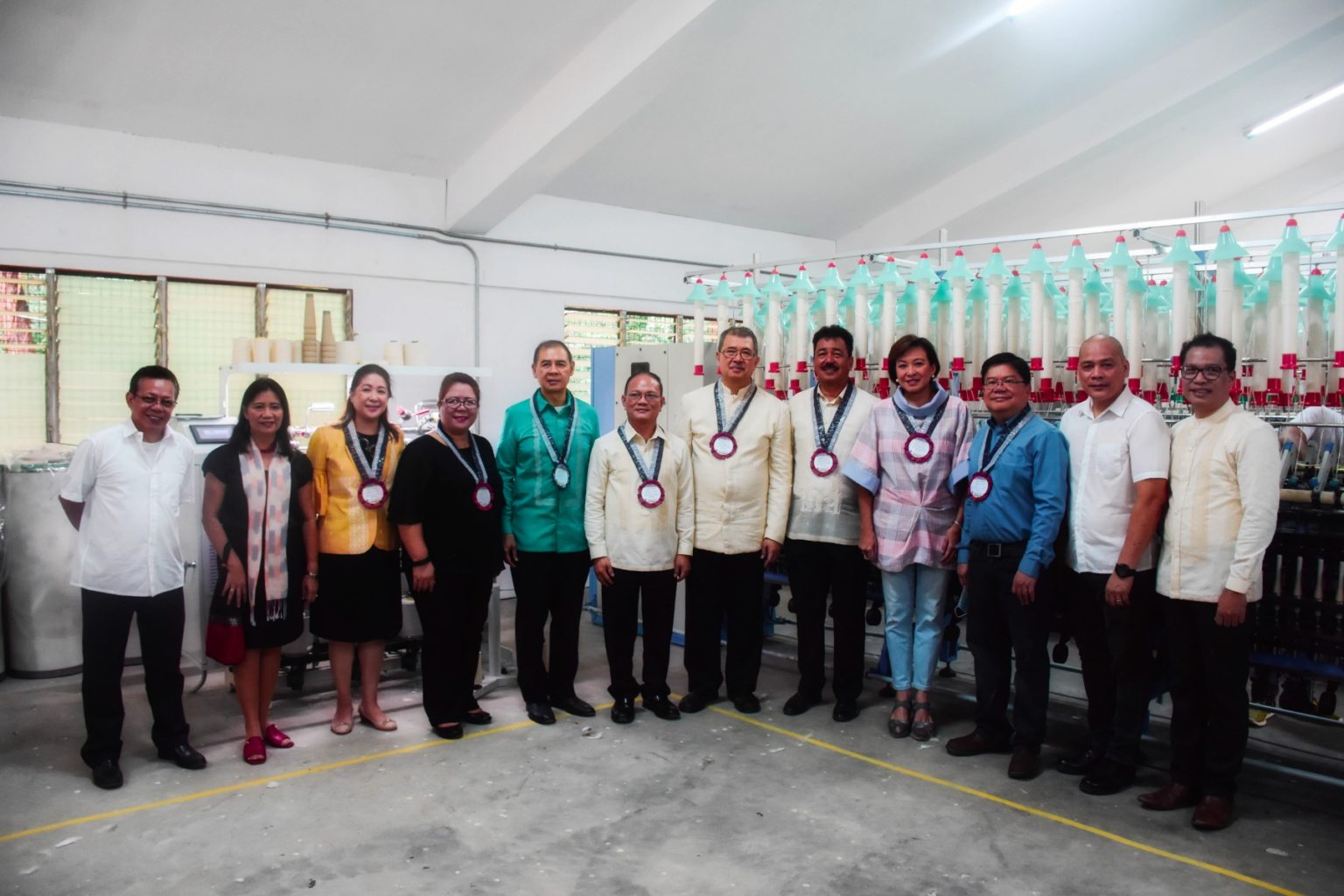ISAT University Miagao Campus is the home of the first – ever Regional Yarn Production and Innovation Center (RYPIC) outside NCR and DOST – PTRI.
Set-up in Miagao, Iloilo, this Regional Yarn Production and Innovation Center (RYPIC) is the first micro-scale yarn spinning facility established outside of the DOST–PTRI and the NCR. It can produce a maximum of 50 kilograms per day of natural textile fiber (NTF) – blended yarns of cotton with abaca, or pineapple leaf which is abundantly available in the region and therefore gives a great advantage to the localized NTF supply chain apart from the fact that it also provides economic activities and jobs on the countryside. The natural textile fiber does not only add value to the raw materials but also pulls together regional textile development opportunities.
With a capacity of 50 kilograms of yarns per day produced in the facility, this translates to an estimated 270 meters of handloom woven (40-inch width) fabrics. One RYPIC may produce 13,200 kilograms of yarns per year, which can be used to produce 36,000 meters of 60″ width fabrics for 24,000 pieces of a female blouse or 18,000 pieces of office Barongs all made using the natural textile fibers. This is a concrete step in enabling the requirements of Republic Act 9242 or the Philippine Tropical Fabric Act on the regional plane.
RYPIC Miag-ao, Iloilo
The very first RYPIC in the country was inaugurated last November 11, 2019, and situated at the Miag-ao Campus of the Iloilo Science and Technology University (ISAT-U) in Miag-ao, Iloilo. It a product of collaboration among the DOST-PTRI, ISAT-U, Department of Science and Technology Region VI, and the Local Government Unit of Miag-ao.
Through the years, the DOST-PTRI has been advocating to form convergence among the academe, private sector, and the local and regional government units in one program that will benefit and support the local textile industry.
RYPIC Iloilo produces either abaca or pineapple leaf-blended yarns with a fiber composition of 70% cotton and 30% NTF. It also produces 100% cotton yarns.
Meanwhile, ISAT-U President Dr. Raul F. Muyong positively shared that the 85-hectare property in Brgy. Aglalana, Passi City will be developed to produce pineapples to supply the requirements of the center, both for production purposes of textiles and for research and development. While currently, the pineapple and abaca fibers, mainly being blended with cotton, are being sourced from different regions.
Iloilo is known for its colorful Hablon fabrics, which were traditionally woven using abaca, cotton, and silk since the pre-Hispanic period. Over time, because of the reduced cotton and NTF plantations, the handloom weavers have to resort to mostly polyester as their primary raw material in weaving. They have perfectly adapted and continue to weave export quality products. In a recent experience, however, they learned that while the international market is keen on the weaving quality, many consider the environmental impact brought about by the raw materials used in the product. With these considerations, the news on the establishment of RYPIC in their location brought natural blended yarns for handloom weaving well within their reach and was, therefore, very well received.
For her part, Barangay Captain Marlou Niones of Brgy. Baraclayan, Miag-ao, Iloilo said, “The cotton is a big help to the industry and also the natural textile fiber in the Hablon industry because it makes us globally competitive because we use our own raw materials instead of the polyester we were using before.”





